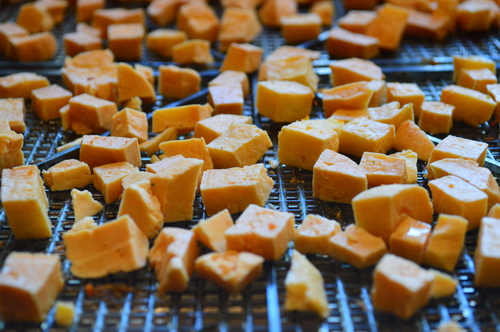How to Make Dehydrated Cheese Powder
One of the little things that many of us may miss the most if we have to rely on our survival stockpiles is cheese and other dairy products. This is why it’s a good idea to dehydrate and store some beforehand in order to have them available during a crisis. While the first thing that comes to mind when we think about dehydrated dairy is powdered milk, you can also get creative and dry a number of different types of cheese as well.
Let’s take a look at some general guidelines along with the overall process, and you can feel free to let your imagination and creativity run wild in terms of incorporating them into various “survival” recipes.
The Right Kind of Cheese
Dehydration, in theory, can work on almost any kind of cheese. However, you will end up with a greater amount of finished product, as well as shorter processing times, when you work with drier varieties. Remember that most of the moisture found in cheese comes from water, and all of that water needs to evaporate before the cheese can be processed and stored over the long-term.
On the softer side, cheddar cheese is a good option, but it produces a lot of oil during the dehydration process. However, going for harder cheeses such as parmesan, gorgonzola, feta or romano are excellent options. If you do plan on experimenting with softer cheeses, make sure that they are all-natural and don’t contain any artificial colors or preservatives. You can also expect to need to double the processing time in some cases in order for all of their moisture to be removed.
Basic Guidelines
As a general rule of thumb, the first thing to do is grate the cheese into small pieces. You can also cut the cheese into thin slices before dicing them, or you can take pasty cheeses and smear a thin layer of them across your lined dehydrating rack. The aim is to make each piece or layer of cheese as thin as possible while maximizing the amount of surface area that is exposed. This will promote even heat distribution and promote faster evaporation.
Once the cheese has been prepared, simply place a single layer around your dehydrator. You can use any type of liner you want in order to prevent the cheese from falling through the slits, but keep in mind that most cheese products will produce some oil. Consequently, you want to experiment with different liners and different cheeses in order to reduce the amount of grease that pools or drips into your dehydrator.
Dehydrate the cheese at a temperature around 120-125 degrees until the pieces are completely dry. Feel free to check in periodically and shake, arrange or turn the pieces as needed in order to ensure that they are drying evenly. You can tell the cheese is done dehydrating when they break up into a dry powder when you rub pieces between your fingers.
Processing
All you need to do is grind up the cheese pieces until they reach an even, grainy or powdery consistency. This will help to release any additional moisture that has been trapped. Store the cheese in vacuum-sealed bags or airtight containers, and you can expect to get a shelf life of up to a few months. Unfortunately, there will always be some greasy remnants in most dehydrated cheese products, and this shortens shelf-life. However, since the process is so simple, you can make batches as needed as long as you have a power supply or heat source for dehydration.
While powdered cheese won’t give you the same benefits as fresh slices, it can be incorporated into a million-and-one different recipes that can be a soothing break from the mundane during a crisis. You can also use it as topping or seasoning for anything from popcorn to pasta and salads. Try it for yourself, and let your creative side go wild, because the possibilities are endless in terms of putting the cheese to good use.

